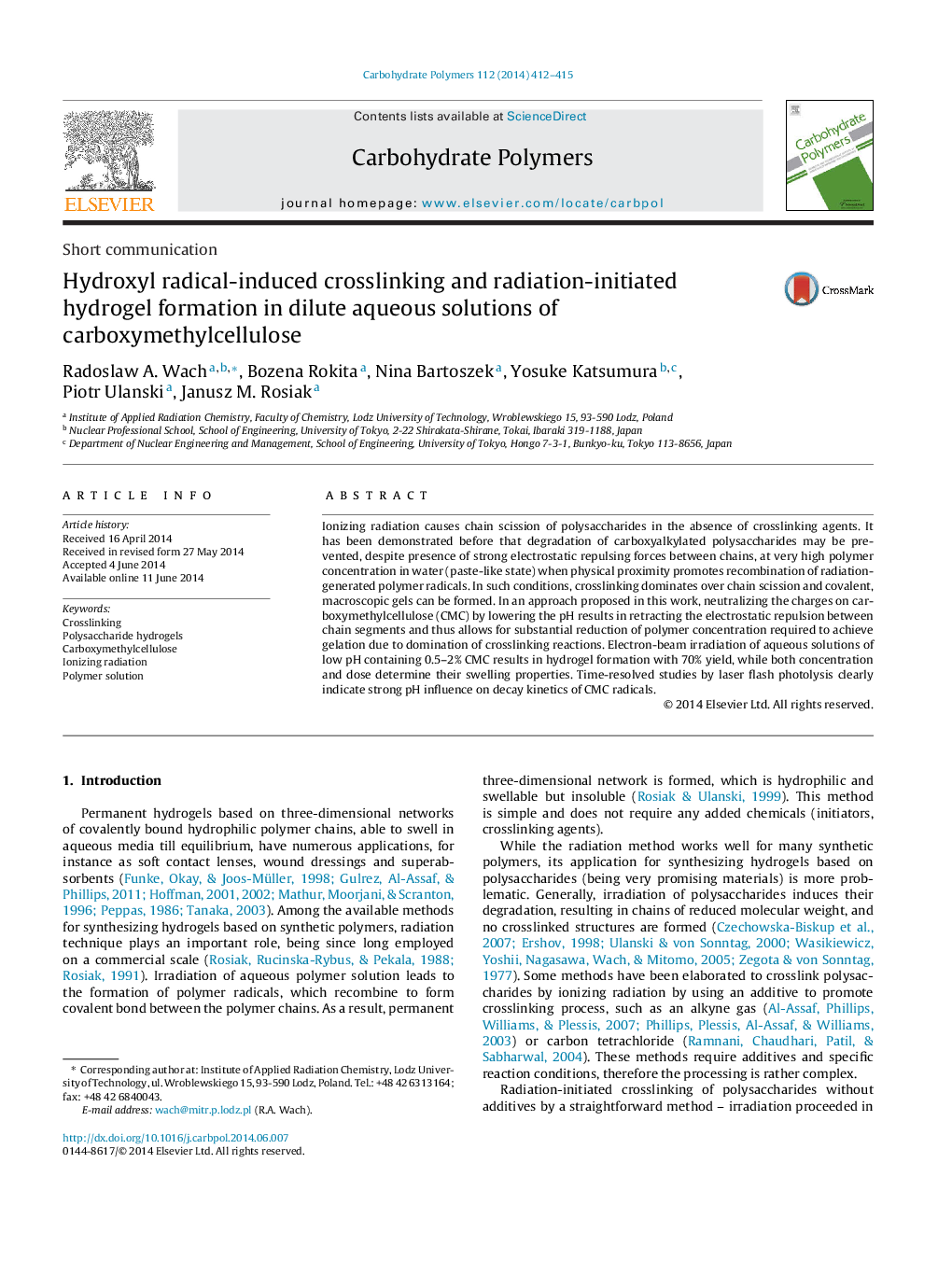| Article ID | Journal | Published Year | Pages | File Type |
|---|---|---|---|---|
| 7791353 | Carbohydrate Polymers | 2014 | 4 Pages |
Abstract
Ionizing radiation causes chain scission of polysaccharides in the absence of crosslinking agents. It has been demonstrated before that degradation of carboxyalkylated polysaccharides may be prevented, despite presence of strong electrostatic repulsing forces between chains, at very high polymer concentration in water (paste-like state) when physical proximity promotes recombination of radiation-generated polymer radicals. In such conditions, crosslinking dominates over chain scission and covalent, macroscopic gels can be formed. In an approach proposed in this work, neutralizing the charges on carboxymethylcellulose (CMC) by lowering the pH results in retracting the electrostatic repulsion between chain segments and thus allows for substantial reduction of polymer concentration required to achieve gelation due to domination of crosslinking reactions. Electron-beam irradiation of aqueous solutions of low pH containing 0.5-2% CMC results in hydrogel formation with 70% yield, while both concentration and dose determine their swelling properties. Time-resolved studies by laser flash photolysis clearly indicate strong pH influence on decay kinetics of CMC radicals.
Related Topics
Physical Sciences and Engineering
Chemistry
Organic Chemistry
Authors
Radoslaw A. Wach, Bozena Rokita, Nina Bartoszek, Yosuke Katsumura, Piotr Ulanski, Janusz M. Rosiak,
